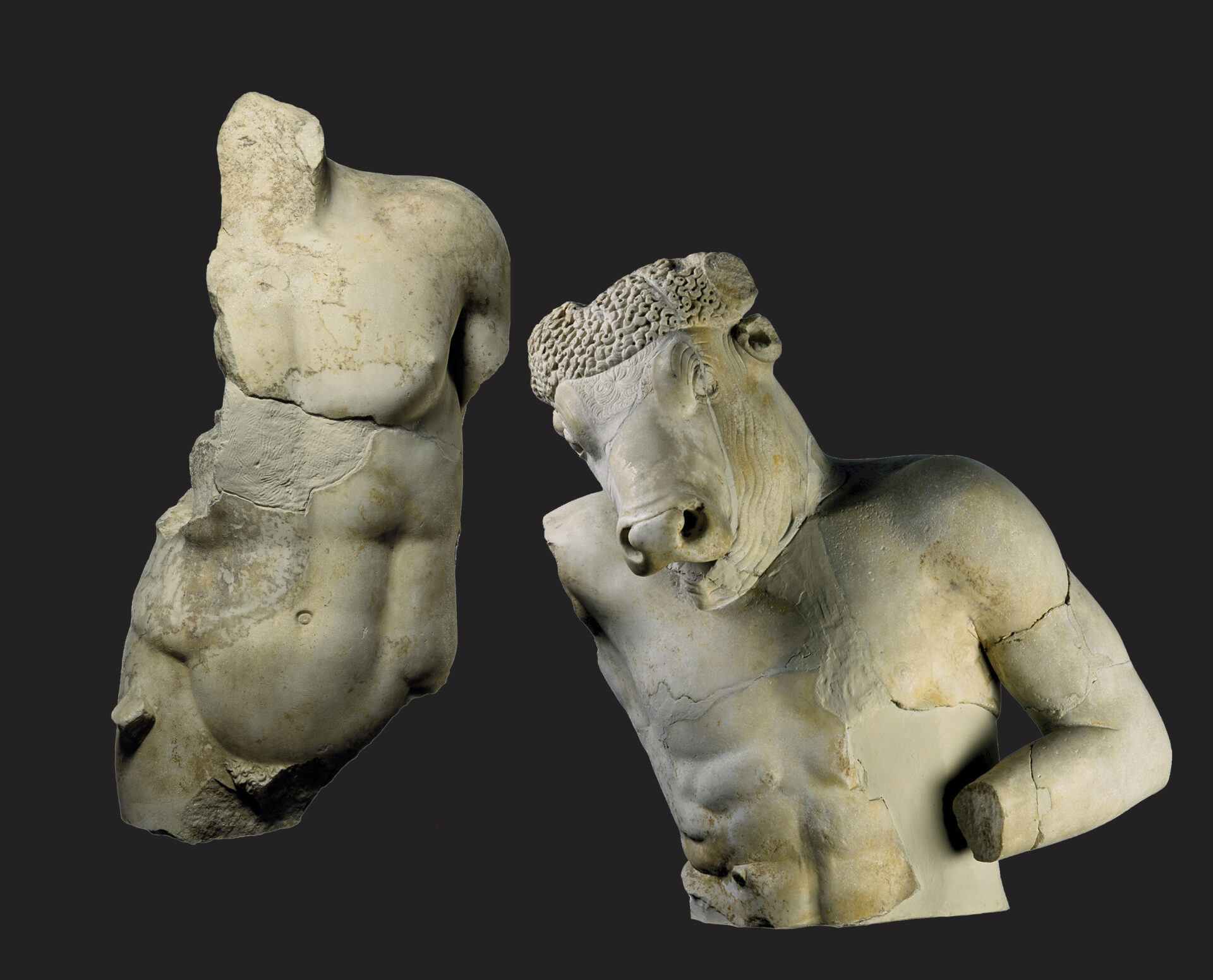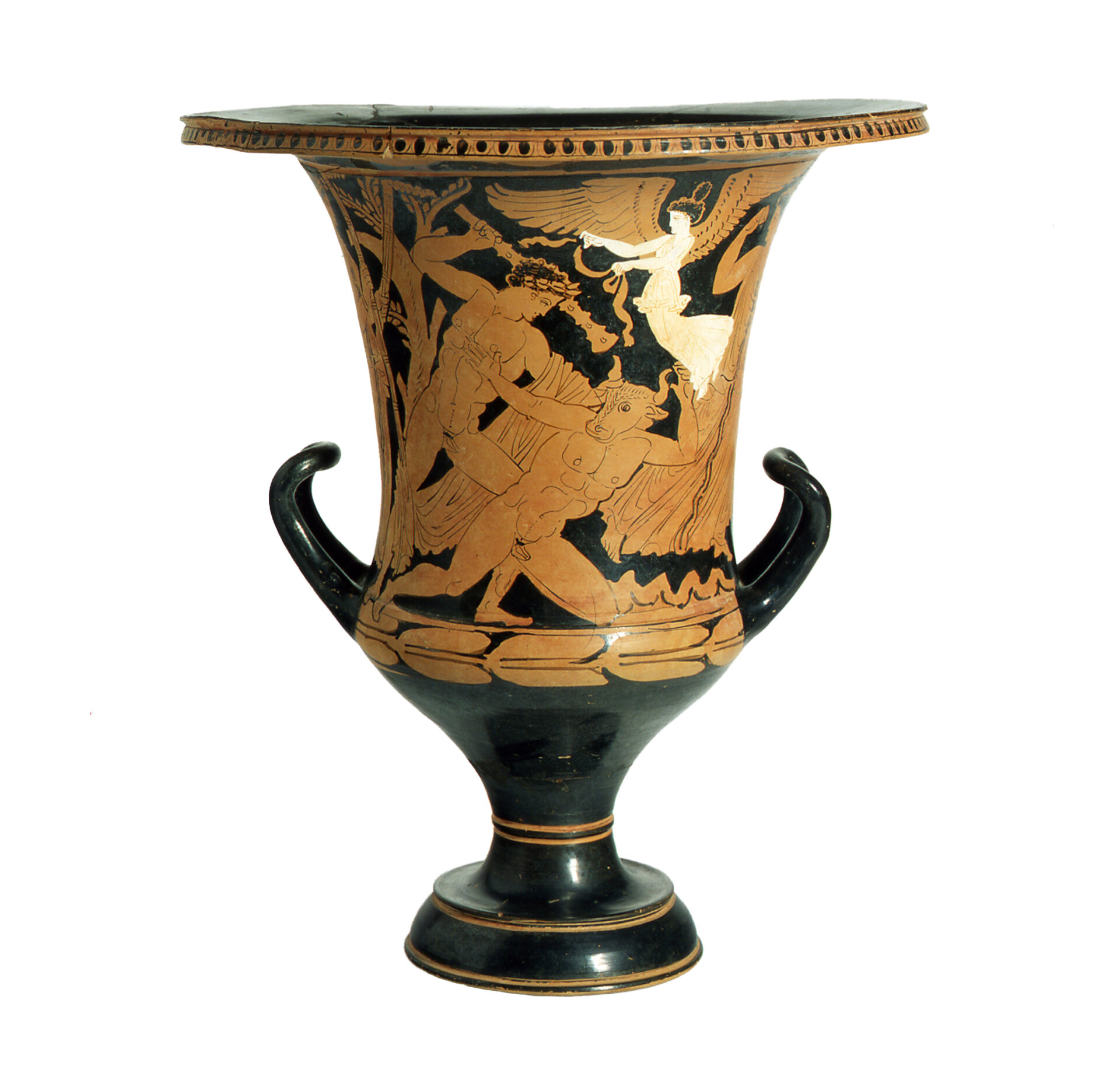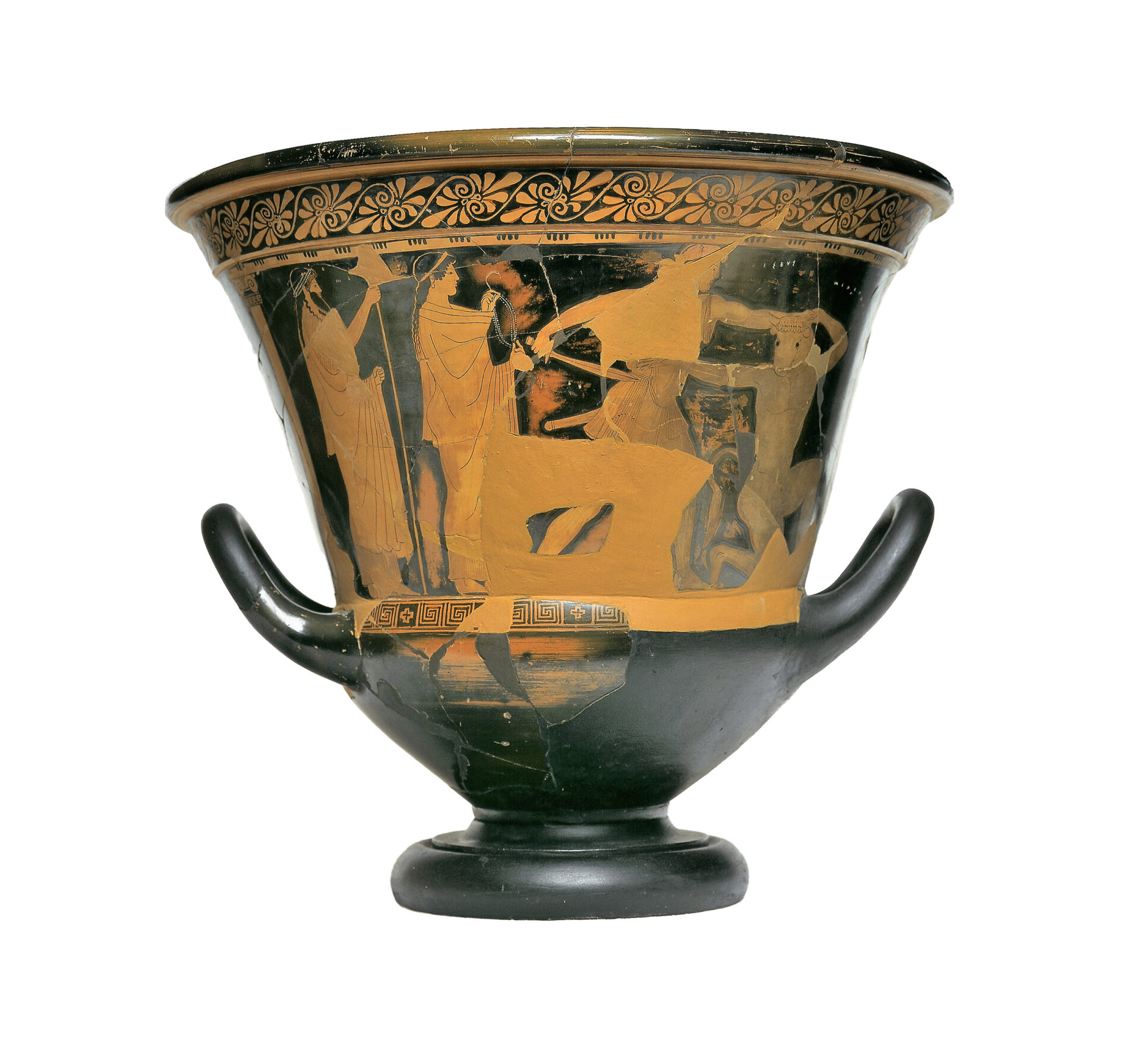Exhibit of the month
The face of the beast: Asterion, the Minotaur
Statuary group of Theseus and the Minotaur
Found in Plaka, Athens
Sculpture Collection, inventory numbers 1664 (Theseus) and 1664α (Minotaur), Room 15
Preserved height of the statue of Theseus 82 cm; of the Minotaur 73 cm.
Roman copy of a 5th c. B.C. sculptural group erected on the Acropolis and mentioned by Pausanias Periegetes in the 2nd c. A.D.
The Minotaur (bull of Minos) was not the son of the mythical king of Crete, but of his wife Pasiphae. He was of divine descent. The queen, who was the daughter of god Helios (the Sun), gave birth to him after pairing with a beautiful white bull, sent by Poseidon. To make this possible she hid inside a hollow wooden cow made by the mythical craftsman Daedalus.
Although Pasiphae has been depicted tenderly holding the infant Minotaur, in a scene possibly inspired by Euripides’ tragedy Cretans, the newborn’s look must have terrified king Minos who, later, assigned Daedalus the task to design the Labyrinth (a maze-like underground shelter), where the monster lived its entire life bound in chains. The Minotaur is sometimes depicted wearing a star-embroidered chiton, a reference to his celestial descent and his real name, which was Asterion or Asterios (the starry one). He fed on human flesh, among which that of the youths and maidens sent by Athens as tribute to King Minos every year. This bloody custom came to an end when Theseus, son of the king of Athens, Aegeus, killed the beast with the help of princess Ariadne.
The sculpture in the National Archaeological Museum depicts the relentless clash between the Athenian hero and the monster. The large head of the bull topping the male body is startling. Its horns, broken today, start out of a cluster of untamed curls, whereas the fur on its forehead is rendered as “humanised” hair in low relief. The large eyes on the sides of the head, the beginning of the ear cavities, the snout with open nostrils and the creases on the neck, leave no doubt as to the non-human nature of the creature. Its body, bulky and vigorous but not bestial, was its main advantage in the battle against Theseus, whom the Minotaur confronted unarmed or holding a stone. The hero attacked his enemy with a club or a sword, eloquent references to human crafts, and took the life of his opponent, who perished amid blood and screams: human reason prevailed over beastly violence.
The Minotaur legend became established in literature and the visual arts of antiquity from a very early date, and there are hundreds of related scenes in ancient Greece and Etruria. The Cretan city of Knossos depicted the Minotaur and the labyrinth on its coins in the 5th century B.C., but the myth was concurrently adopted by Athens in an effort to legitimise its economic, nautical and cultural power, while the youthful Theseus became the prototype of the future citizen. Virgil, Ovid and Seneca enriched Latin literature with references to the myth, and possibly instigated the particular preference of the Roman world for the subject of the labyrinth, with vertiginous representations on mosaic floors, perhaps also as an allegory of the Underworld. In their centre, the beast possibly symbolised the death from which humans could escape through one and only path, similar to that followed by Theseus.
The myth of the Minotaur embodies many awkward truths but also many conquests of civilisation: violation of nature (Pasiphae and the bull), human sacrifice (cannibalism), subjugation (human lives as tribute of Athens to King Minos) are juxtaposed to heroism, divine and royal legitimation (Helios, Poseidon, Aigeus, Theseus), cognition and inventiveness (Daedalus), astronomy (Helios and Asterion), motherly love (Pasiphae and the infant Minotaur), salvation (Theseus’ victory, escape from the labyrinth) and man’s prevalence over irrational nature.
Dr Despina Ignatiadou
Nikolaos Kaltsas, Εθνικό Αρχαιολογικό Μουσείο. Τα Γλυπτά, Athens 2001, cat. no. 169.
Lexicon Iconographicum Mythologiae Classicae (LIMC), vol. VI (1992), Minotauros, no. 66.
Claude Calame, Thésée et l’imaginaire athénien. Légende et culte en Grèce antique, Lausanne 1990
Françoise Frontisi-Ducroux, Ο Μινώταυρος, ή η δημιουργία του υβριδίου, in Ο ταύρος στον μεσογειακό κόσμο : Μύθοι και λατρείες (S. Athanasopoulou, Y. Tzedakis, eds.), Athens 2003, 124-131
https://www.theoi.com/Ther/Minotauros.html
http://www.greek-language.gr/digitalResources/ancient_greek/mythology/lexicon/crete/page_027.html




